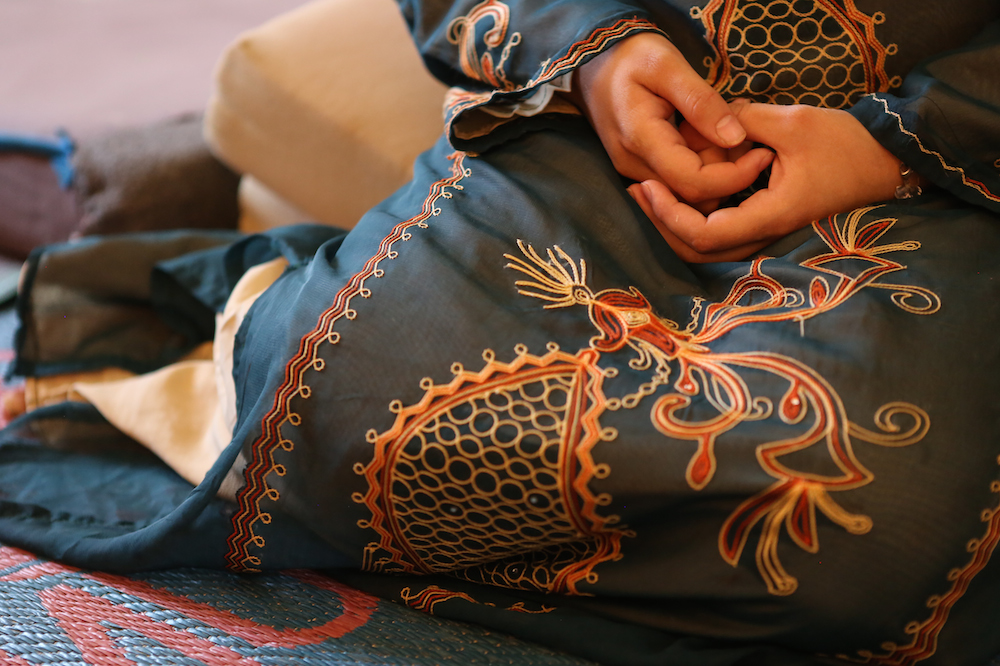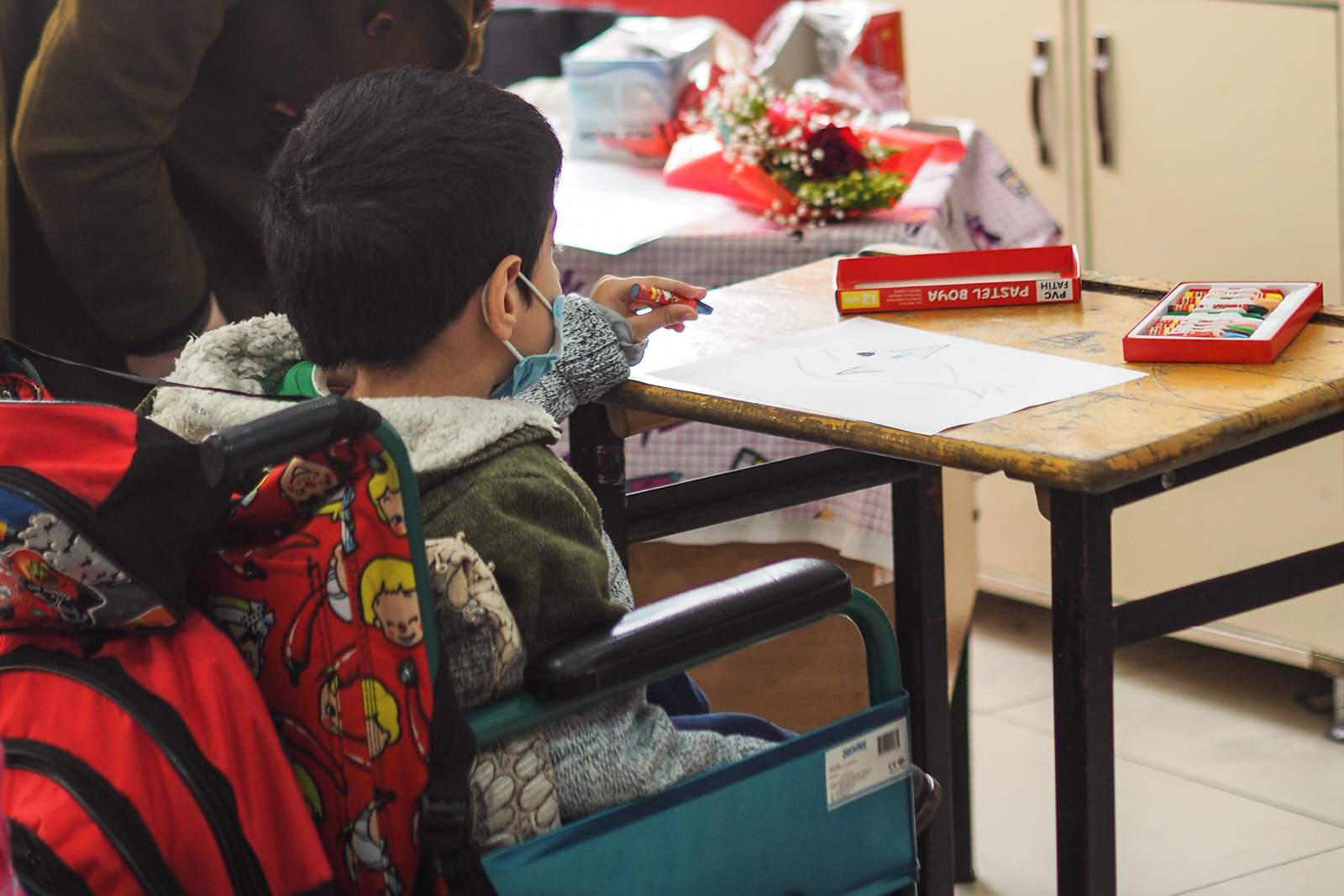
Children with disabilities

This page shows that children with disabilities are more likely to miss out on school than other children. We explain more about the barriers they face and the global commitments to overcome the barriers and give inclusive education to all children.
Education for the most marginalised children
Children with disabilities are more likely to miss out on school than other children. Even if they go to school, they are more likely to leave before finishing their primary education.
For children who are already marginalised, such as girls and children living in rural areas, a disability creates an additional barrier to accessing education.
Global statistics on children with disabilities
Between 93 million and 150 million children live with a disability worldwide. The World Health Organization and the World Bank estimate that in some countries “being disabled more than doubles the chance of never enrolling in school”. An estimated one in three out-of-school children have a disability.
Throughout Africa, less than 10% of children with a disability are in primary education. In some countries only 13% receive any form of education.
In Bangladesh, 30% of people with disabilities have completed primary school, compared to 48% of those without disabilities. In Zambia it is 43% compared to 57% and in Paraguay 56% to 72%.
According to one estimate, 75% of children with disabilities in Afghanistan are out of school. Many of them have been injured by land mines.
In developing countries, people with disabilities tend to be poorer than other adults. Missing out on education not only affects the quality of life for individuals and their families, it also has a negative economic impact for countries. A study by the International Labour Organization found that countries lose between 3% and 7% of Gross Domestic Product by excluding people with disabilities from the job market.
Education can help people with disabilities get increased access to employment, health and other services, and develop a better awareness of their rights.
Barriers to learning for children with disabilities
Specific barriers to education for children with disabilities include:
- Accessibility
School buildings may not be accessible to children with physical disabilities. In remote rural areas or slums with poor infrastructure, there may be no way for children with physical disabilities to get to school.
- Inadequate teacher training and support
Teachers often lack the training and resources to teach children with disabilities and to adapt their methods to address their needs.
- Inflexible curriculum and materials
Limited resources mean schools can struggle to adapt teaching materials like books and chalkboards for students with disabilities. For example, less than 5% of published books are available in formats appropriate for people with visual impairments.
- Lack of data
Only 21 countries have living standard surveys that collect data on chronic illness and disability. There is no universally-accepted definition of disability for comparison between countries. Statistics and information about people with disabilities are often inaccurate due to a lack of resources. Sometimes disabilities are not reported because of cultural discrimination.
- Poor policies and plans
Many countries do not have plans, targets or policies that include children with disabilities. Education budgets in developing countries are often limited, leaving insufficient resources for children with disabilities. The lack of accurate data also works against effective laws and policies being introduced.
- Cultural barriers
Cultural beliefs sometimes mean teachers, parents and other children have negative attitudes to people with disabilities leading to bullying, abuse and exclusion from school. Because of stigma and discrimination, students can suffer from low self-esteem which affects their academic work. Some children even hide their disabilities because of their fear of rejection and stigmatisation and so don’t get the support they need.
Inclusive education in emergencies and disasters
When there is a crisis situation, getting children with disabilities into school can be bottom of the list of problems to be tackled.
However, it’s widely accepted that education is even more crucial in these circumstances to provide structure and a chance for children to deal with trauma which can cause emotional and psychological issues.
Education in emergencies can save children’s lives – providing them with a secure environment and information, and protecting them for abuse, exploitation, prostitution, child labour, recruitment into fighting, etc.
Global commitments to inclusive education
The United Nations Sustainable Development Goals explicitly include those with disabilities in some targets to be reached by 2030, such as:
- Equal access to education and vocational training
- Building or upgrading education facilities to make them inclusive learning environments
- Safe, accessible transport systems for all
The UN Convention on the Rights of Persons with Disabilities (2006) has now been ratified by 157 countries, which means they are committed to providing inclusive education to all children with disabilities.
Many countries are moving towards a model of inclusive education, which enables children with disabilities to be educated in local schools rather than be educated separately. This requires system-wide and structural changes to reduce and remove the barriers.
When people with disabilities get a quality education, they are enabled to take up key positions in their communities, challenging stigmas and changing negative attitudes about their abilities.
Useful links on the issue of Children with disabilities
Convention on the Rights of Persons with Disabilities: The UN Convention promotes, protects and ensures the full and equal enjoyment of all human rights and fundamental freedoms by all persons with disabilities, and promotes respect for their inherent dignity.
Send All My Friends to School: Evaluation of the UK’s Aid to Education for Children with Disabilities, published by the Global Campaign for Education in 2014.
Equal Right, Equal Opportunity: Report on Inclusive Education For Children With Disabilities, published by the Global Campaign for Education in 2013.
Next resource
